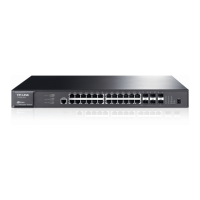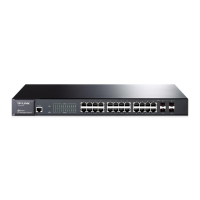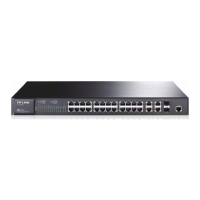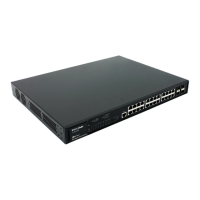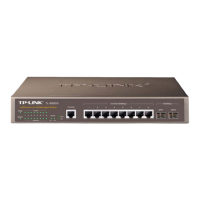JetStream 52-Port Gigabit Stackable L3 Managed Switch CLI Guide
Chapter 43 Static Multicast Routing Commands
Multicast routing table uses the RPF (Reverse Path Forwarding) mechanism to determine the
upstream and downstream neighbors basing on the unicast route and the static multicast route.
The RPF feature checks the multicast routing entries and ensures the correct forwarding paths
of the multicast packets. Static multicast routing entry works to change or to connect the RPF
routes, and provides important basis for the RPF check.
43.1 ip mroute
Description
The ip mroute command is used to add or modify the static multicast routing
entries. To delete the specified entry, please use no ip mroute command.
Syntax
ip mroute {
source-address
} {
mask
} {
rpf-address
} [
distance
]
no ip mroute {
source-address
} {
mask
}
Parameter
source-address ——
The IP address of the multicast source, in the format as
192.168.0.1.
mask
——
The mask of the multicast source IP address.
rpf-
address
—
— The interface of the specified RPF entry.
distance
—
— The administrative distance of the static multicast routing entry,
ranging from 0 to 255. If the value of the static multicast routing entry is
smaller than that of other RPF entries, then the static multicast routing entry
will take effect. The default value is 0.
Command Mode
Global Configuration Mode
Example
Add a static multicast routing entry with the source address as 192.168.0.1,
mask as 255.255.255.255, rpf-address as 192.168.1.1 and distance as 1:
T3700G-52TQ(config)#ip mroute 192.168.0.1 255.255.255.255 192.168.1.1
1
379

